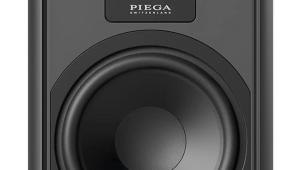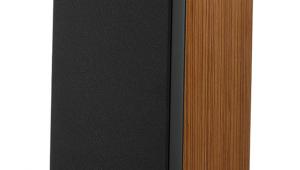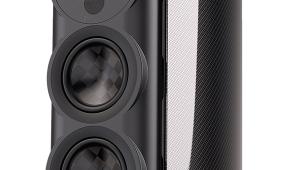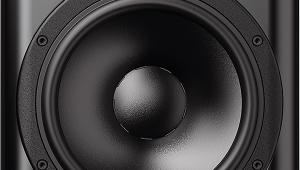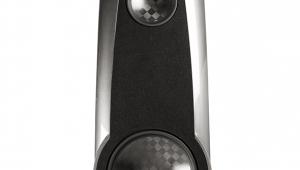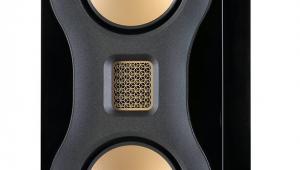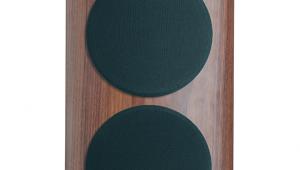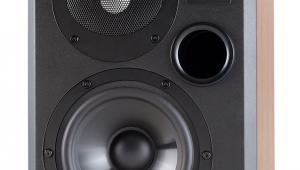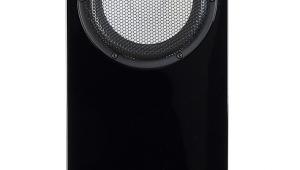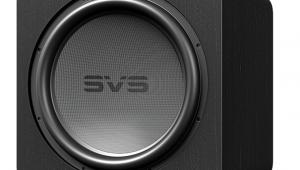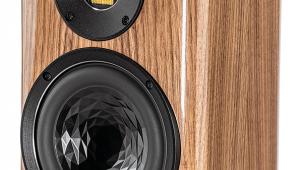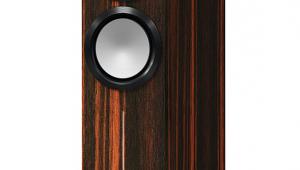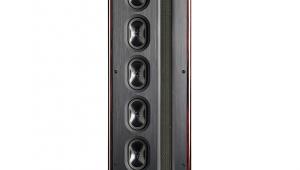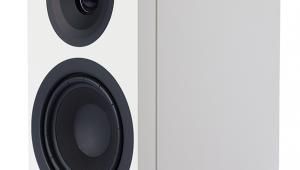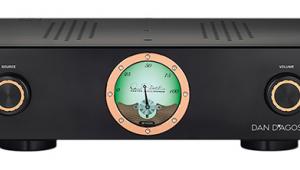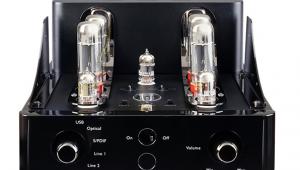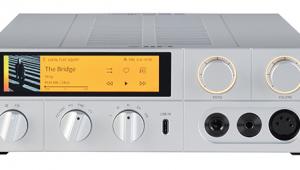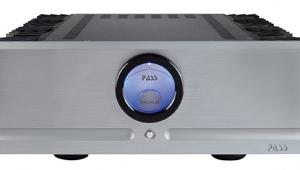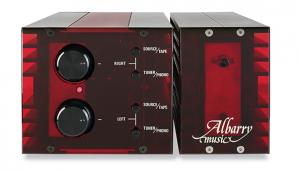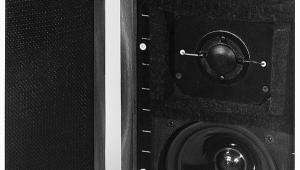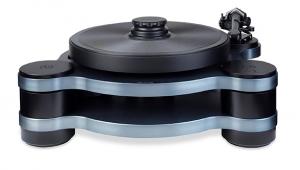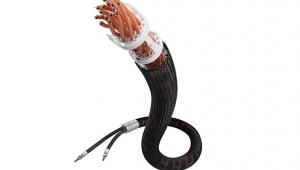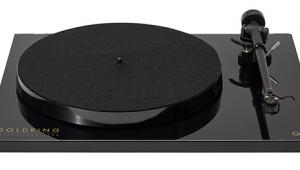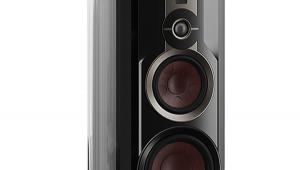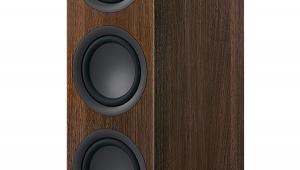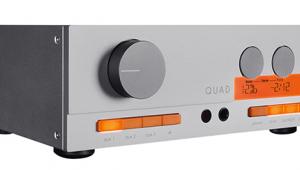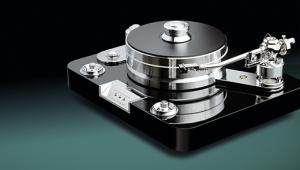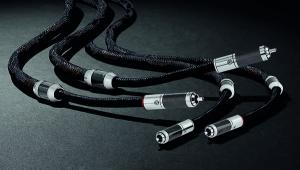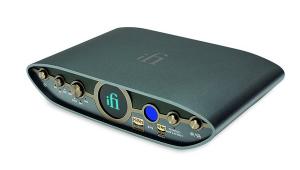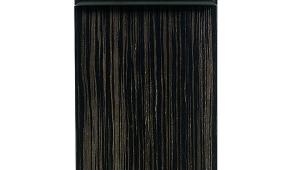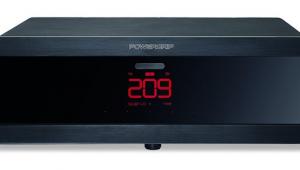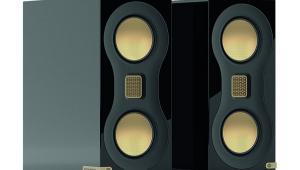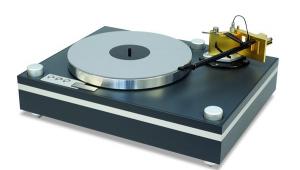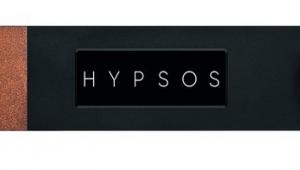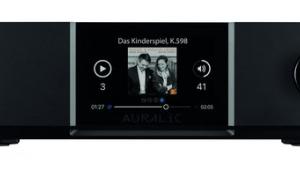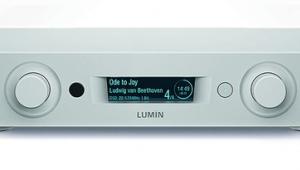Focal Diva Utopia network-attached active loudspeaker
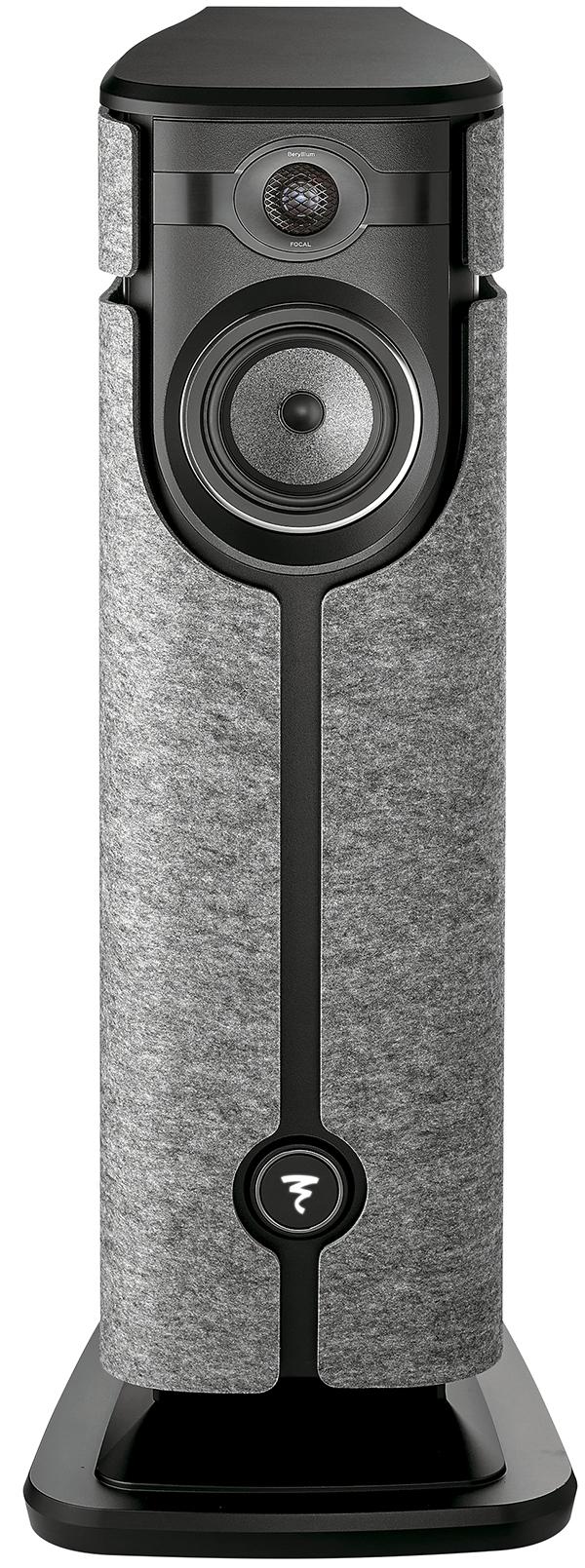

The latest member of Focal’s Utopia loudspeaker family is clearly cut from a different cloth – and that’s before you lay eyes on its felt cabinet wrap. Sure, at £29,995 the Diva Utopia boasts a similarly ‘high-end’ asking price to the likes of the £34,999 Scala Utopia Evo [HFN Aug ’17] and its overall styling isn’t far off its siblings either. But this is Focal’s first active loudspeaker, the result of a collaboration with Naim Audio, its stablemate brand since 2012. In fact, to call it a speaker doesn’t really do the Diva Utopia justice. It’s more like a full system inside a loudspeaker enclosure.
From one point of view, this union of the two companies makes sense, as it allows for the passive loudspeaker design of Focal to be merged with Naim’s amplification and processing knowledge from the very beginning of a product’s design. On the other hand, one does wonder how an ‘all-in-one’ option such as this sits alongside the whole ‘Focal Powered By Naim’ retail concept, where customers are invited to mix and match models from the two. Still, as Naim Audio’s Steve Sells told us [see boxout], the Diva Utopia isn’t aimed at traditional hi-fi enthusiasts.
Voice and vision
This becomes apparent once you dig into the speaker’s specification and Focal’s marketing literature. For instance, here’s a near-£30,000 system that ‘revolutionises home listening… whether it’s music, movies, or video games’. And, yes, that does mean the Diva Utopia offers an HDMI eARC connection for use with a TV, in addition to aptX Adaptive Bluetooth streaming. Apple Siri and Google Assistant also bring a degree of voice control, alongside comprehensive use via the Focal & Naim app [see boxout], and quick-fire adjustment of some settings from the system’s remote handset.
Much of the above are features of active speakers offered at a fraction of the price demanded here, so there’s obviously more to the Diva Utopia’s story than its consumer-friendly ethos. For one thing, these are speakers intended for large listening spaces, not compact living rooms: they stand an impressive 1.2m tall and extend back some 56cm on their black aluminium plinth stand. Optional spiked feet, plus end caps for use on hard surfaces, are provided, while built-in castors make shifting the 64kg cabinets around a breeze.
Grey matters
The enclosures are eye-catching, too. Made from a high-density moulded polymer, FEA-optimised for structural rigidity, they feature a black plastic-topped section that forms a ‘head’ for the rest below, and the whole shebang has a slight lean-back look. There’s also that grey felt finish, from German designer Becker Brakel, to consider. This certainly gives the Diva Utopias a unique appearance, but I’m not sure it will have universal appeal. If you decide it doesn’t match your décor, alternative options will be offered in the future.
But it’s the under-the-hood electronics and driver arrangement that Focal believes elevates the Diva Utopia above the competition. For the former, Naim Audio engineers have designed a network, DSP and amplification board [see boxout] that mounts vertically into the rear of the Diva’s cabinet, its lengthy heatsink exposed. Power is rated at a total of 400W per speaker from Class AB modules – not the Class D some might expect – while the D/A conversion stage, which also handles the speaker’s stereo RCA analogue input after ADC conversion, tackles 384kHz/24-bit PCM in FLAC, ALAC, WAV and AIFF formats, plus DSD 64/128.
Side kicks
Meanwhile, digital connectivity comprises wired/wireless networking, optical, HDMI eARC and USB-A for local drive playback. There’s no USB-B port, but then perhaps this isn’t a loudspeaker to which people will want to hook up a laptop. As for the drivers, each Diva Utopia cabinet houses four side-mounted 165mm bass units made from Focal’s proprietary W cone material, where glass-fibre layers sandwich a foam core. There are two on each side, creating pairs in a resonance-cancelling, push-push configuration, and their DSP-controlled output is further ‘tuned’ by a down-firing vent that exits onto an ‘escape ramp’ in the speaker’s plinth stand.
The W cone is also used for the speaker’s front-facing 165mm midrange, here with a TMD (Tuned Mass Damper) surround [HFN Sep ’15] and magnet system including a NIC (Neutral Inductance Circuit) Faraday ring. Above this is a 27mm inverted dome (‘M profile’) beryllium tweeter, behind a black/red meshed grille and framed by a shallow waveguide.
Setup of the Diva Utopias is naturally more involved than with passive speakers, although standard placement recommendations still apply; the manual warns against a corner installation and says optimal positioning is well clear of side and rear walls. Toe-in is also recommended, the two enclosures and the listening seat forming a classic equilateral triangle.
Master blaster
One Diva Utopia cabinet, with source inputs, is the ‘Master’ speaker and pairs automatically with the ‘slave’ via wireless UWB (Ultra Wide Band) technology, chosen by Naim for its 6GHz-9GHz operation that steers clear of the congested lower-frequency bands typically used in a home. In this guise, cable-free apart from the two mains leads powering the Diva Utopias, playback from master to slave is limited to 96kHz/24-bit. For sample rates to 192kHz, an RJ45 cable links the speakers together.
With setup complete, the smart-looking Diva Utopias are ready to play, and for the majority of users I expect this will mean through the Focal & Naim app, or Chromecast. The supplied remote control does come in handy for adjusting volume or skipping and pausing tracks, however, and can switch between the system’s HDMI eARC, optical and analogue inputs. The gloss black handset will also be familiar to owners of other Naim separates, being slim, automatically backlit and based around the same Zigbee RF connectivity.
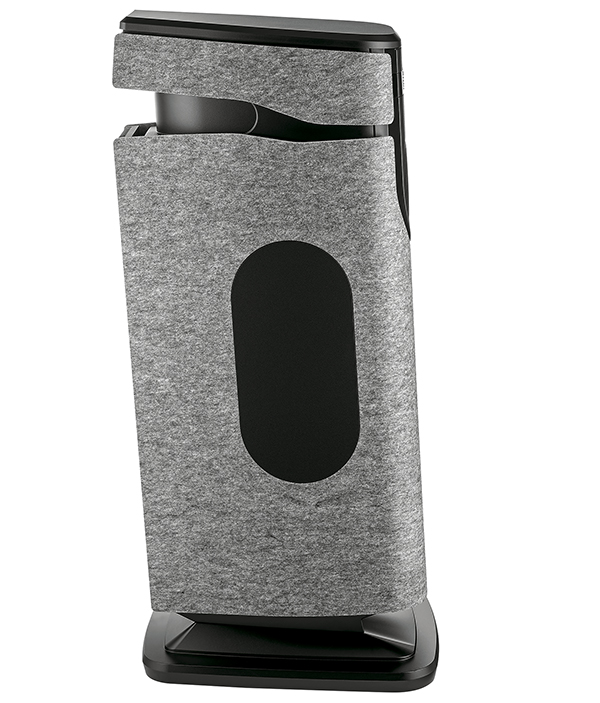
Above: Low frequencies are handled by two pairs of force-cancelling 165mm bass drivers, each set mounted into the side of the cabinet and powered by a 125W Class AB amplifier
![]() Quality control
Quality control
These days, ‘diva’ has connotations beyond the original Latin for goddess. Various female pop stars have been critiqued as divas in recent years, for their – no doubt media exaggerated – temperamental nature. Focal’s own Diva Utopias, however, are nothing of the sort. Their sound is always balanced, always controlled, from top to bottom of the audio band. They go about their business with a sense of poise, whether that’s building a believable, precise soundstage or displaying instrumental detail. It’s easy to sense the hand of Naim’s digital processing at work here, as these speakers know what’s hitting their drivers before the drivers do.
This means the Diva Utopias can be played loud without fear of their well-balanced nature falling apart. And set up in HFN’s large listening room, they built a commensurate largescale sound, so that the spread of jazzy invention on the Ralph Alessi Quartet’s ‘Everything Mirrors Everything’ [It’s Always Now; ECM Records; 96kHz/24-bit] appeared completely free of the cabinets themselves. There was a feeling of a connection to the music and nothing else, particularly as the setup had only a discreet network cable in sight.
The rat-a-tat cymbal work of drummer Gerry Hemingway was brilliantly vivid on this piece, as were his out-of-nowhere snare hits. Similarly, the upright bass of Bänz Oester enjoyed sinewy detail and texture, while Alessi’s trumpet tone slipped from smooth to forceful. And this evocation of analogue instruments was repeated on Hans Zimmer’s ‘Rise’, from The Dark Knight Rises [The Music Of Hans Zimmer…; Silva Screen SILCD1453], which is full of low, slow strings that the Diva Utopias delivered with rich solidity, backed by fainter, higher notes. The portrayal of the rest of the orchestra had a physicality to it, too, particularly the weightier parts that were not overplayed, resulting in a very natural-sounding performance.
Elsewhere in this box set is Zimmer’s ‘Jack Sparrow’ theme from Pirates Of The Caribbean: Dead Man’s Chest. Here, the jolly cello motifs of the Prague Philharmonic decayed elegantly in a generous acoustic and were artfully focused centre-stage. In its portrayal of this live performance, the Diva Utopia showed a clean set of heels to lesser systems that gloss over fine details. Off axis-listening didn’t cause the soundstage to fall apart either, which is another feather in this system’s cap – it’s conceivable the speakers might suit areas with a wider spread of listening positions. When Zimmer’s percussion and low brass arrived, the sound thickened considerably, but still with admirable separation of its constituent parts and hefty low-end extension from the system’s octet of bass drivers [see boxout].. It was noticeable, however, that the Diva Utopias didn’t exactly leap into the dynamic blasts of this orchestral piece, once again showcasing an unruffled mien.
Gentle giant
Indeed, this system seems to have been voiced to favour refinement over aggression, clarity over vigour. As such, bursts of hard rock might not suit those seeking a more up-front presentation, even while the Diva Utopias thrill with their resolution and timing. Greta Van Fleet’s ‘Age Of Man’ [Anthem Of The Peaceful Army; Republic Records; 88.2kHz/24-bit) poured from Focal’s speakers with weight and groove to the bass and drums, plus steely riffs, while ‘Lover, Leaver’ found them locking slickly into the up-tempo rhythm. Metallica’s meaty, well-produced ‘Enter Sandman’ [Metallica, Elektra; 96kHz/24-bit] revealed this system’s adept control of the low-end as Lars Ulrich’s tom-tom drums came and went without smear.
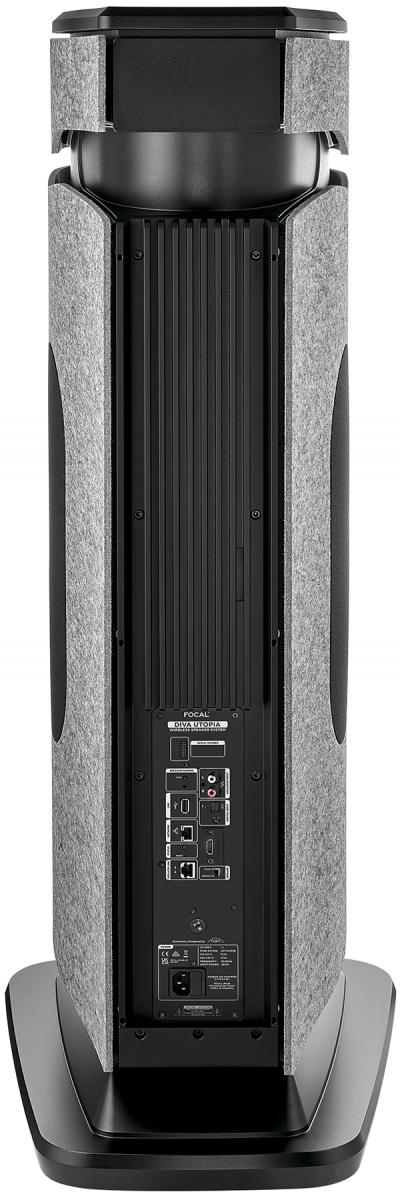
Above: Rear of the ‘Master’ is seen here with its long heatsink (also reinforcing the cabinet) and inputs including USB-A (external HDD), HDMI eARC, Ethernet, analogue line in (on RCAs) and the Speaker Link (on RJ45)
Purple pleaser
This cool-headed, refined approach worked wonders with ‘Daphnis Et Chloe Suite No. 2’ [Ravel/Duparc: Aimer Et Mourir, Linn Records; 192kHz/24-bit], where the stage was packed with details front-to-back and left-to-right, and the speakers’ fluid midband shone through. It also kept the fuzzy, chaotic opening guitar lines of Deep Purple’s ‘Speed King’ [Deep Purple In Rock; Warner Bros. WPCR-1564] on the right side of grating, before Jon Lord’s keyboards filled the room.
Basslines throughout this song and the epic ten-minute ‘Child In Time’ were superbly defined, but it was tracks from PS Audio’s The Art Of Hi-Fi: Bass [DSD128] that showed off the Diva Utopia’s low-end fidelity, first with the patter of drums – their skins moving under tension – around the soundstage during ‘Rocky Mountain Rain’, then the low electric bass on the jazzier ‘How Deep’. And while the same set’s ‘Erase Me’ seems to be only ostensibly about bass, its vocals are another interesting characteristic. Segueing between a lone, central position and multitracked across the full soundstage, they were rendered appropriately breathy yet poised, with superb clarity.
Source savvy
It’s not every active speaker system that will happily play a DSD file one minute then a Bluetooth stream the next. Okay, my listening didn’t stoop to the latter, but I’ve no doubt the Diva Utopia’s sonic building blocks – balance, control, detail and depth – would make their mark no matter the source. Focal’s first venture into ‘Connected Speakers’ is the result of deliberate engineering and attention to detail, and that’s reflected in its performance. It’ll be interesting to see what the company serves up next…
Hi-Fi News Verdict
Although the Diva Utopia carries a hefty price tag, it’s easily comparable to a well-specified separates ensemble from its parents, Naim and Focal. In that regard its appeal is clear: a genuine plug-and-play system, rich with features but none of the fuss of ‘traditional hi-fi’, and delivering a musical, involving performance that blends power and poise. As for the grey felt wrap… well, you might love it.Sound Quality: 86%
